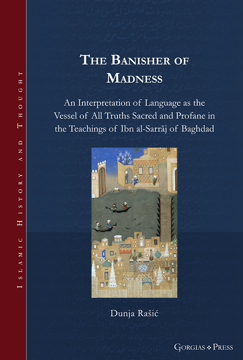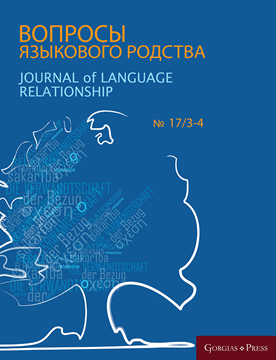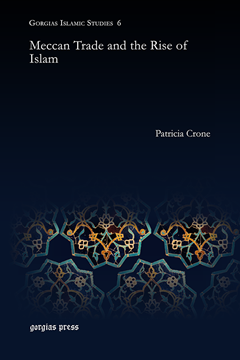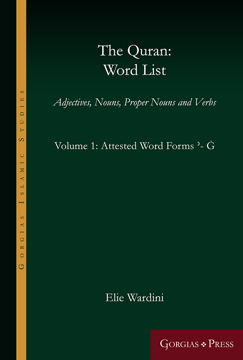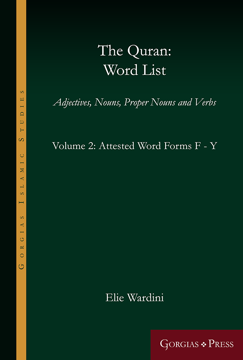The Banisher of Madness
An Interpretation of Language as the Vessel of All Truths Sacred and Profane in the Teachings of Ibn al-Sarrāj of Baghdad
By Dunja Rašić
Series:
Islamic History and Thought 18
ISBN:
978-1-4632-4162-9
Born in the late 9th century Baghdad, the ʿAbbāsid grammarian ‘Abū Bakr Muḥammad b. Saḥl Ibn al-Sarrāj came to be remembered as the Banisher of Madness and the virtuous scholar whose life has exemplified the culture of Arabs in its fullness. Lauded as the arch-enemy of Hellenistic sciences and, at the same time, as the main source of transmission of Aristotelian logic from the 10th century philosophers to the grammarians of Baghdad; Ibn al-Sarrāj nonetheless remains a shadowy figure in the history of Arabic grammar studies up until today. This book addresses this issue by examining the problematic relationship between language, logic and grammar in Ibn al-Sarrāj’s teachings.
$153.00 (USD)
Journal of Language Relationship 17/3-4
Series:
Journal of Language Relationship 17/3-4
ISBN:
978-1-4632-4167-4
The Journal of Language Relationship is an international periodical publication devoted to the issues of comparative linguistics and the history of the human language. The Journal contains articles written in English and Russian, as well as scientific reviews, discussions and reports from international linguistic conferences and seminars.
$74.00 (USD)
Ottoman Architecture
A Study Published for the 1873 Vienna World’s Fair
Series:
Gorgias's Modern Muslim World 16
ISBN:
978-1-4632-4170-4
Ottoman Architecture is the first modern history of Ottoman architecture written by Ottomans themselves, yet it is little known outside the field of late Ottoman studies. This magnificently-illustrated volume codifies the empire’s architectural history into a series of preliminary stages culminating in the efflorescence of the Ottoman classical tradition in the sixteenth-century.
$131.00 (USD)
$104.80 (USD)
Meccan Trade and the Rise of Islam (paperback)
Series:
Gorgias Islamic Studies 6
ISBN:
978-1-4632-4172-8
The late Patricia Crone reassesses one of the most widely accepted dogmas in contemporary accounts of the beginnings of Islam: the supposition that Mecca was a trading center. In addition, she seeks to elucidate sources on which we should reconstruct our picture of the birth of the new religion in Arabia.
$74.00 (USD)
Word List (Volume 1)
Adjectives, Nouns, Proper Nouns and Verbs
By Elie Wardini
Series:
Gorgias Islamic Studies 14
ISBN:
978-1-4632-4173-5
The aim with the present series, The Quran: Word List, is to present every word form in the Quran as raw data with as little interpretation as possible. The digital text used for this purpose is the Uthmani text of the Tanzil Quran Text. In volumes one and two each attested word form in the Quran is listed alphabetically with no parsing and no alteration. These are listed by word form < lemma < root. Volume three consists of two sections. In section one, the lemmas assigned to each attested word form are listed. In section two, the assigned roots are listed. In assigning each word a root and lemma, Classical dictionaries and Quran commentaries, as well as modern Quran dictionaries have been consulted.
$149.00 (USD)
Word List (Volume 2)
Adjectives, Nouns, Proper Nouns and Verbs
By Elie Wardini
Series:
Gorgias Islamic Studies 14
ISBN:
978-1-4632-4175-9
The aim with the present series, The Quran: Word List, is to present every word form in the Quran as raw data with as little interpretation as possible. The digital text used for this purpose is the Uthmani text of the Tanzil Quran Text. In volumes one and two each attested word form in the Quran is listed alphabetically with no parsing and no alteration. These are listed by word form < lemma < root. Volume three consists of two sections. In section one, the lemmas assigned to each attested word form are listed. In section two, the assigned roots are listed. In assigning each word a root and lemma, Classical dictionaries and Quran commentaries, as well as modern Quran dictionaries have been consulted.
$149.00 (USD)
